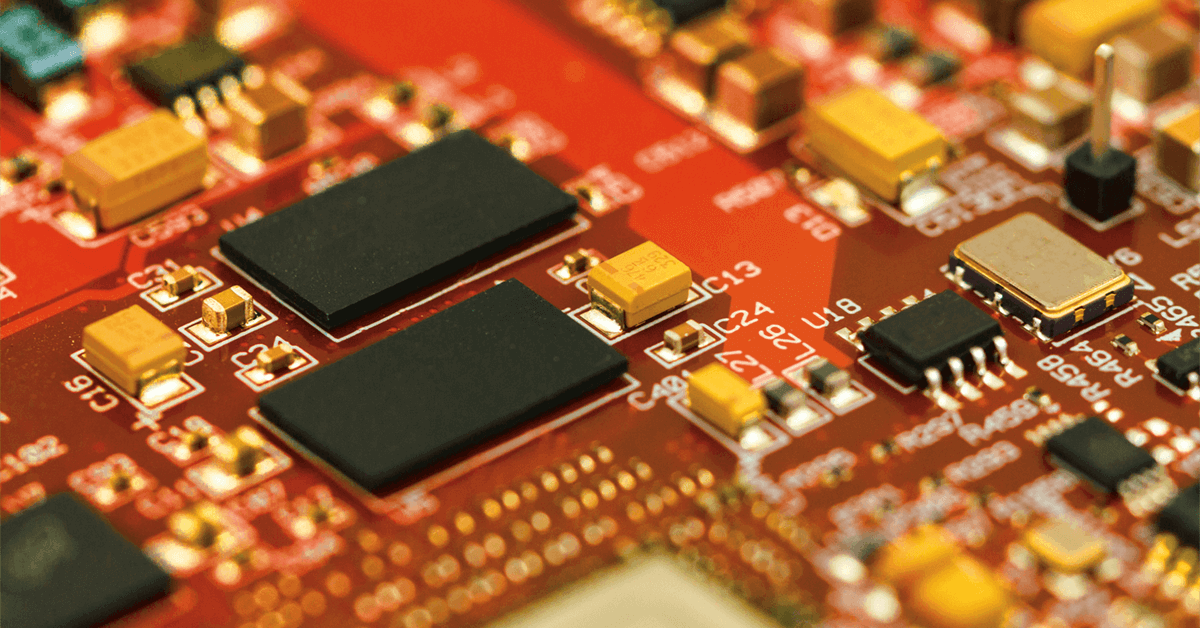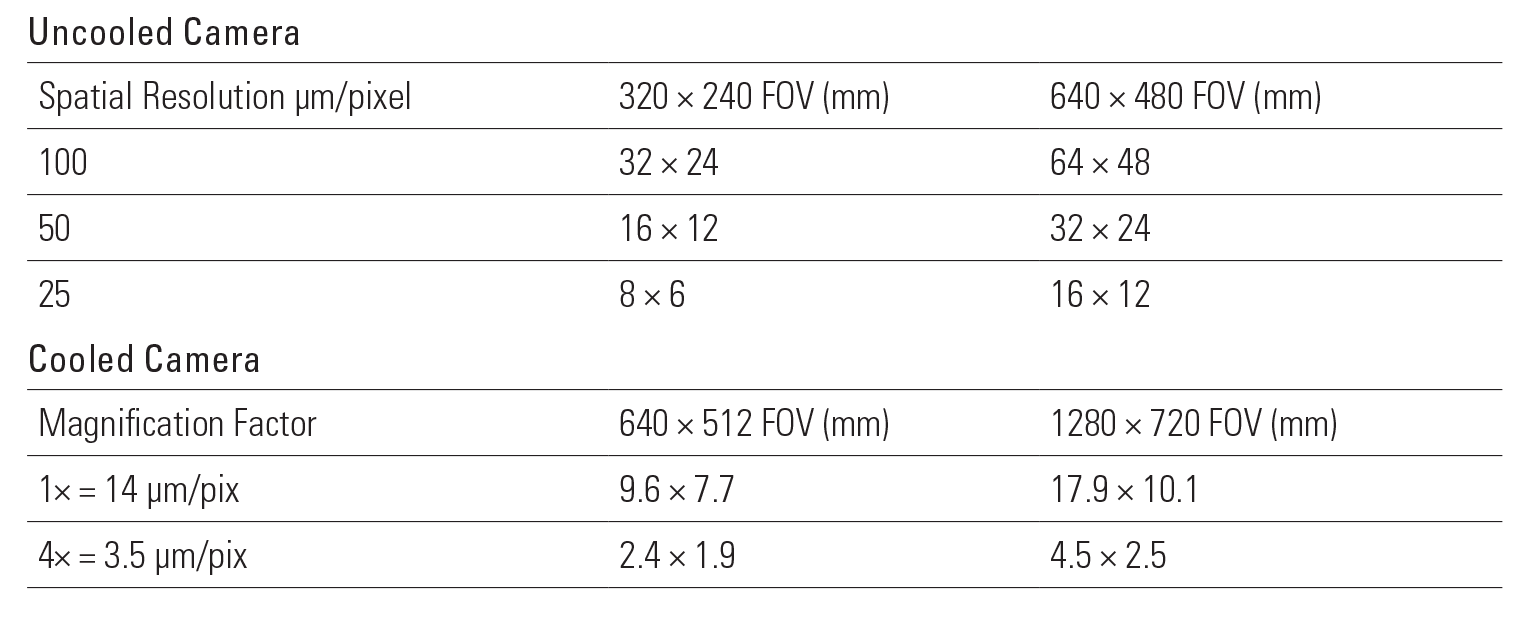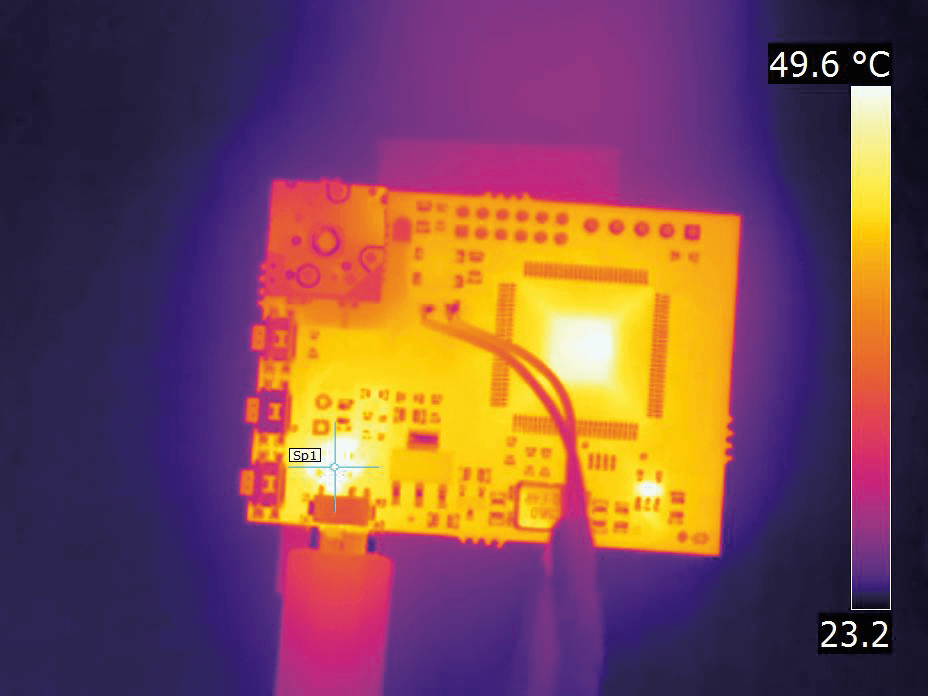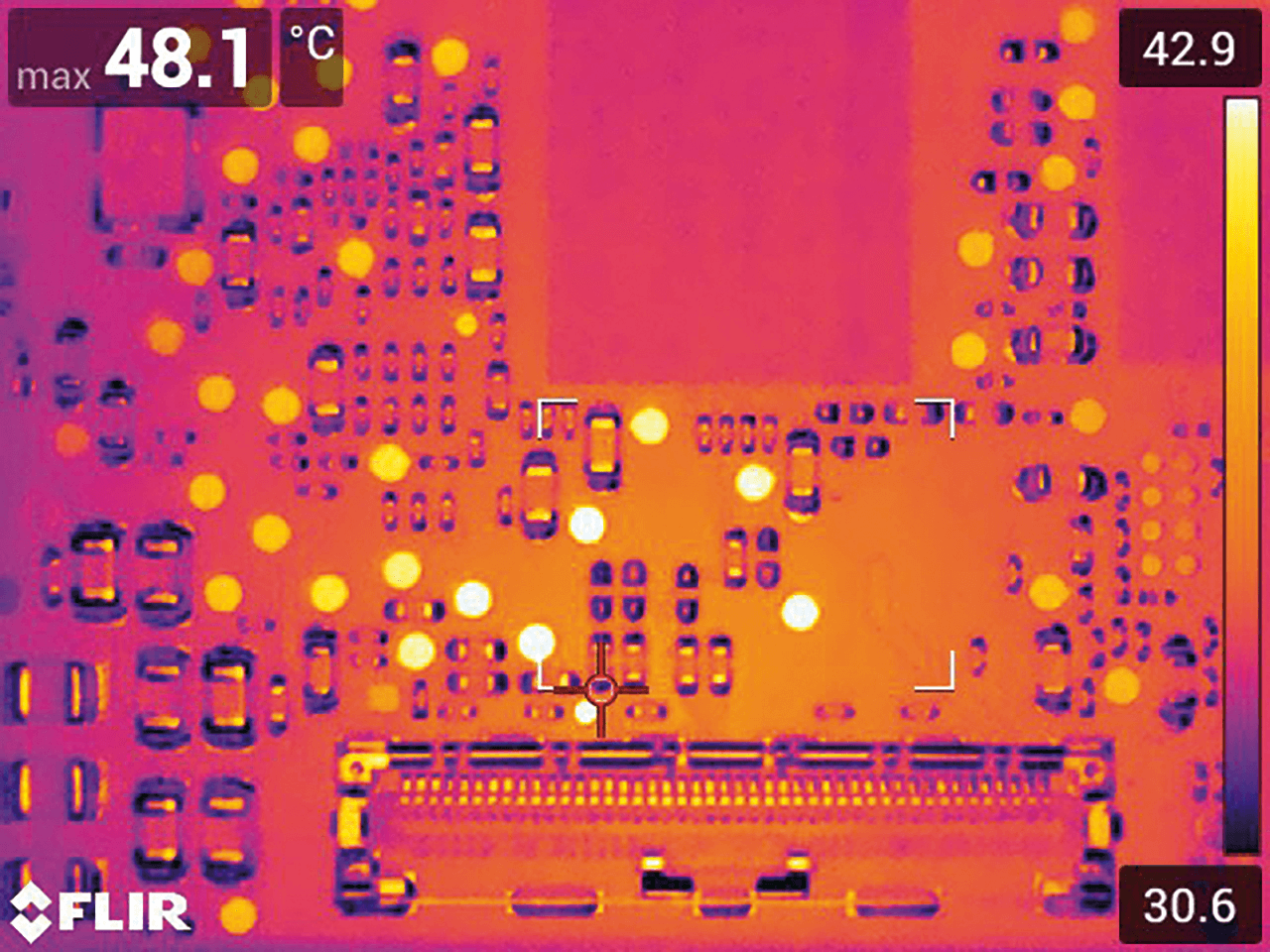FLIR T500-Series Macro Mode: single-lens solution for imaging small targets

Thermal cameras are used throughout many stages of R&D and quality assurance. Electronics inspection is one of the most common applications for thermal imaging, which typically involves finding hot spots on printed circuit board assemblies (PCBAs) and ensuring that various component are working within their design limits.
In today’s world of shrinking electronics, the most common surface mount PCBA components can range in size from a 0603 (1.6 mm × 0.8 mm) to as small as a 0201 (0.6 mm × 0.3 mm). Accurate temperature measurements of these components require at least a 3 × 3 pixel area—or 9 total pixels—on the target, with a 10 x 10 pixel area or greater being ideal for greater measurement accuracy.
For many thermal cameras, one pixel can cover 600 µm—or 0.06 mm—on a target; this represents the camera’s spot size. So, to achieve the minimum 3 × 3 pixel coverage on an 0201 component, you would need a camera and lens combination that provides a much finer spot size—say, 100 µm. An even smaller spot size would be needed to properly characterize the hot spots on a specific point on the 0201 component (Figure 1).
 Figure 1
Figure 1
While thermal imaging is a versatile technology, using a camera with a single prime lens can be limiting. Sufficient magnification for electronics testing often requires additional macro lenses to reach the spot sizes required to detect hot spots, measure temperature, and properly characterize the thermal response of small components. Having several of these lenses on-hand will produce superior images but isn’t always cost-effective. FLIR’s Macro Mode offers a more flexible option when you want to inspect a wide range of small targets with a single lens.
Macro Mode allows you to capture accurate temperature measurements of small targets without changing lenses (Figure 2). A FLIR infrared camera with a standard 24˚ lens and Macro Mode enabled can reach a spot size as small as 71 μm—no lens change needed. At this spot size, the camera can accurately measure temperatures and thermally characterize 1.6 mm × 0.8 mm sized 0603 components. It can even detect hot or under-performing components as small as 0.6 mm × 0.3 mm.


Traditional macro lenses are often challenged by their short working distance. And with the tall components on some PCBAs it can be difficult to physically position a camera close enough to focus on shorter components. FLIR’s Macro Mode allows users to place the camera at a workable distance while still providing a small spot size. For example, a FLIR T540 with 24˚ lens needs to be at least 150 mm from its target to capture a focused image. At this distance, the spot size will be limited to 140 μm. Switching into Macro Mode reduces the minimum distance that a camera must be from its target, allowing you to focus on surface-mount components and other small objects instantly. The same hardware with Macro Mode enabled can provide a clear image from 60 mm and achieve a spot size of 71 μm—no lens change needed.
Macro Mode works by adjusting the camera’s detector position during the calibration process, which provides additional working distance between the sensor and lens. Enabling Macro Mode through a firmware update adds an “Image Mode” menu to the camera’s GUI. However, since the thermal image’s focus and clarity rely on the adjusted detector position, the visible light MSX imagery will be misaligned. This compromise means that a camera in Macro Mode will only save IR images.
FLIR’s Macro Mode is an innovative feature that offers R&D, quality assurance and other professionals the flexibility required for testing PCBAs and other electronic components without the need or expense of additional lenses. The standard 24˚ lens can be used to investigate a larger area or entire PCBA. Once a hot spot or smaller area of interest if found, enabling Marco Mode allows for more in-depth examination and thermal analysis without changing lenses. Contact your FLIR representative to learn more about how Macro Mode can streamline your electrical testing.
 PCBA thermal imaging with Macro Mode
PCBA thermal imaging with Macro Mode
